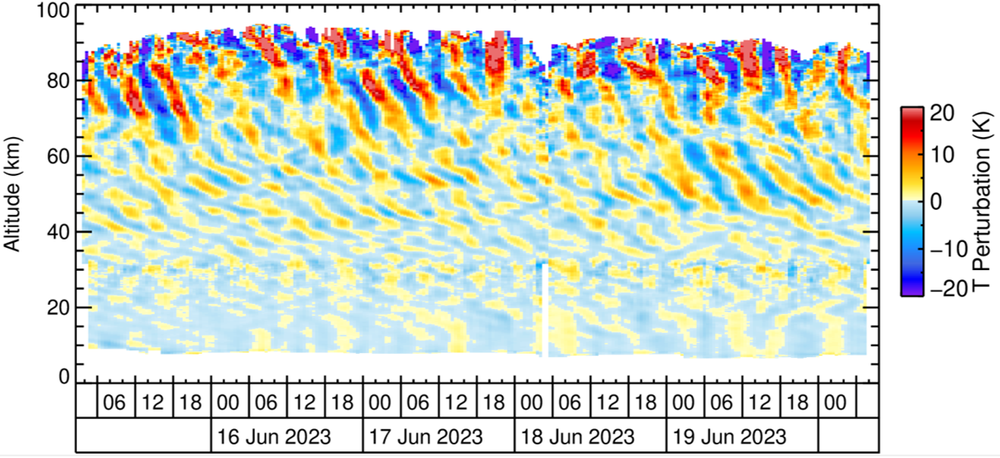ALIMA
ALIMA is a powerful iron resonance and Rayleigh lidar for airborne measurements in the middle atmosphere, including the stratosphere, mesosphere and the lower thermosphere.
Above the troposphere that is home to our daily weather, we find the stratosphere, the mesosphere and the thermosphere. These layers, that are defined based on their thermal structure, are coupled by atmospheric waves. Waves transport energy and momentum over large distances, redistributing these quantities in our atmosphere. This can lead to substantial deviations from radiative equilibrium, for example at the very cold polar summer mesopause, and induces a global circulation. Atmospheric tides generate winds of up to 100 metres per second in the mesosphere. In the stratosphere, winds are decelerated by the breaking of gravity waves generated e.g. by wind overflowing mountains in wintertime. The thermosphere connects our atmosphere to space, and inflowing solar wind is known to induce storms. The propagation of atmospheric waves is influenced by a variety of processes, such as their interaction with winds or other waves. Secondary and higher-order waves can be generated that again propagate in all directions. Breaking waves create a variety of instabilities and turbulence through a cascade down to smaller scales. Observing the atmosphere and identifying and studying the dynamic processes at the various scales is essential to gaining an understanding of our atmosphere as a whole.

For this research we combine in-situ and remote sensing measurements of atmospheric parameters obtained from ground as well as from aircrafts, balloons, sounding rockets and satellites with idealized numerical simulations, numerical weather prediction and climate models. We develop powerful and novel lidar instruments, which we deploy in extended field measurement campaigns to specifically target selected dynamics processes.

